David Tanis’ Egyptian Breakfast Beans
July 11, 2014 § 1 Comment
In Jamaica last weekend, we had the most amazing breakfasts. I would go to bed each night counting down the hours till we would sit down at the table on the porch and start the day. I would remind Sam each night that I was VERY excited for breakfast.
We often had some combination of scrambled eggs, collard greens, plantains, and toast or homemade biscuits. I slathered everything in this scotch bonnet hot sauce, which is made in Jamaica. I picked up two bottles at the airport on the way home–if you are a hot sauce lover, you gotta try it. But my absolute favorite was the day that a pile of beans showed up on my plate in place of the eggs (and I love eggs, so you know these beans were good). They looked like extra large white beans and were soft, creamy, and savory.
When I got home, I was determined to make some version of these beans. I scoured the internet, including these two excellent sources on Caribbean cooking, but couldn’t find quite what I was looking for, perhaps because I didn’t really know what I was looking for…I didn’t know what went into the beans or even what kind of beans they were.
But then I started flipping through my cookbooks and found a recipe for Egyptian Breakfast Beans in David Tanis’ cookbook, One Good Meal. The beans looked creamy and warm, and seemed like they could satisfy my craving.
The recipe only required a few ingredients, and I had a lovely image of these beans simmering on my stove after work while I whipped up a cake I had also tried in Jamaica and wanted to recreate. It was going to be just like Dana Velden describes cooking beans in my all-time favorite weekend meditation post at The Kitchn: it wouldn’t “require much fuss and bother, no bam and slam or showing off.”
But oh no, that was not to be. David Tanis calls for peeled dried fava beans, and mine were full on in their peels. I had seen that word, “peeled,” on the list of ingredients, and tried to do some Googling, but only found information on fresh fava beans, not dried. So I figured they were fine and dumped them in my pot. After an hour, they were still rock solid, which is when I returned to the Google machine, did a whole lot more searching and link clicking, and realized each of my little fava beans had to be popped out of their peels.
I started at it, one by one, pressing on the peel until the beans popped out. And guys, it sucked. It was 8:30 pm, I was hungry, my hands were starting to hurt, and I wanted to quit. For the most part, the kitchen is a nice place where we can relax and enjoy the routine and monotony of tasks like chopping and stirring. But sometimes, things just go wrong, and at least for me, it can be especially hard when it happens in the kitchen. The kitchen is supposed to be where I find joy. It’s good practice though, for life, to feel stress and figure out a way out. In another wonderful weekend meditation post, Dana Velden talks about this need to let go. I took a few deep breaths, looked at the pile of unpeeled beans, and decided to do just enough to make one bowl of breakfast beans for myself. I would get to the rest on another day, when hunger and frustration weren’t surging quite so high.
After all that struggle, the beans were awesome. They are infused with the flavors of the olive oil and garlic, and pretty addictive. I topped them with hard boiled eggs (not pictured because by the time the eggs were done I was too hungry to take a photo), slices of tomato and red onion, and my new scotch bonnet hot sauce. I didn’t eat particularly slowly or savor the small number of beans my work produced. I was too tired to do that, so I just ate.
This post is long already, and started with a story about nice breakfasts in Jamaica and veered into talking about how we deal with adversity, so I’m going to place my learnings about fava beans at the bottom of the recipe, but I’ll link to the kind you need to buy in the ingredients list if you don’t want to pull your hair out. If you want to practice your stress management skills, go ahead and buy some fava beans in their peels.
David Tanis' Egyptian Breakfast Beans
From One Good Meal, David Tanis
Makes 4-6 helpings 1 pound dried PEELED fava beans
Half of a small onion, peeled (apparently everything in this recipe must be peeled!)
8 cups water
2 teaspoons cumin (the original recipe calls for cumin seeds, which you can toast in a dry pan for a minute or so and add to your beans at the end)
4 minced garlic cloves
scant 1/4 cup olive oil
salt and pepper
Garnishes:
Tomato slices
Red onion slices
Hot sauce
Squeeze of lemon juice
- In a soup pot or dutch oven, cover the beans and onion half (just put the entire onion half in the pot, you’ll take it out later) with 8 cups of water.
- Turn the heat to high and bring to a boil, then reduce the heat to simmer the beans.
- Simmer the beans for about an hour, until they start to break down. I monitored my beans to make sure the water wasn’t getting too low, and occasionally added a couple tablespoons of water to keep them simmering nicely.
- Once the beans are soft, take out the onion and season well with salt, pepper, and ground cumin.
- Add the minced garlic and olive oil to the pot and simmer for another 15 minutes. The mixture should be thick after the 15 minutes; if not, keep simmering a little longer.
- Using a fork or the back of a wooden spoon, smash the beans so some are mushy and some retain their shape. Essentially, you want a mix of textures, so don’t over smash.
- Scoop the bean mixture into a bowl for each eater and add lots of tomatoes, hot sauce, red onion, and slices of hard boiled egg. Finish by squeezing some fresh lemon juice over each bowl.
What I learned about fava beans, the hard way:
- There are fresh fava beans that come in pods or shells. The beans within the pods have peels. Some people say you don’t even have to take them out of their shells, and can boil them or roast them right in their shells, like you would with green beans or edamame. Some people say you should remove them from their pods, but there is no need to take their peels off.
- Then there are dried fava beans, which you buy already out of their pods or shells. You can buy dried fava beans peeled or unpeeled (like mine pictured above). Peeled fava beans are called habas.
- You are going to want your dried fava beans to be peeled or they will never. ever. cook. These poor souls suffered the same fate I did. To peel dried fava beans, you can soak them overnight, then boil them for 10 minutes or so. They will then be much easier to squeeze out of their shells, but you still have to go one by one. Whole Foods has some good instructions here.
- To make things even more confusing, fava beans are also called broad beans.
Moral of the story: if you are using dried fava beans, buy peeled ones.
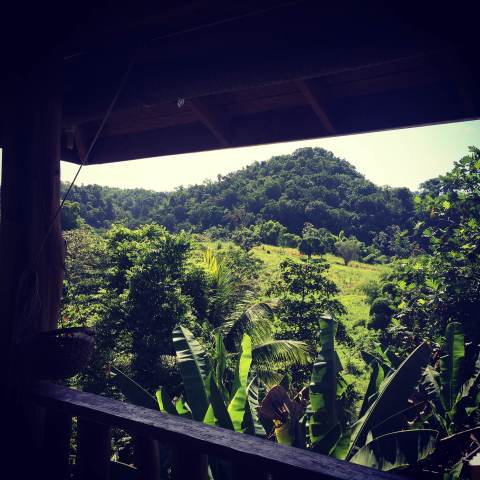
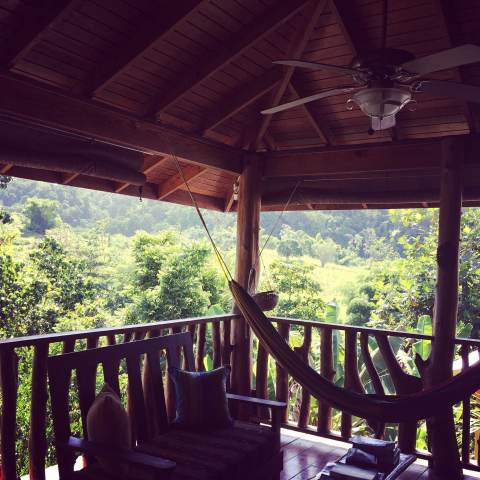
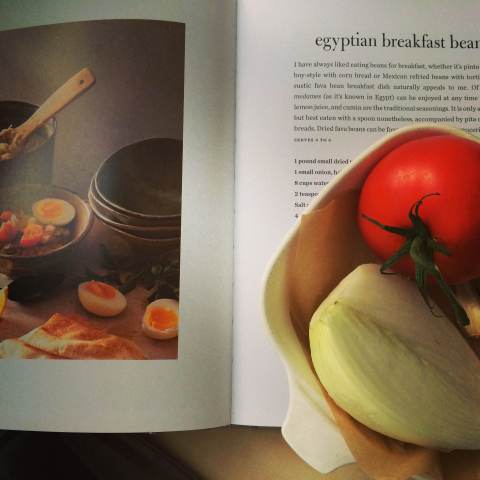
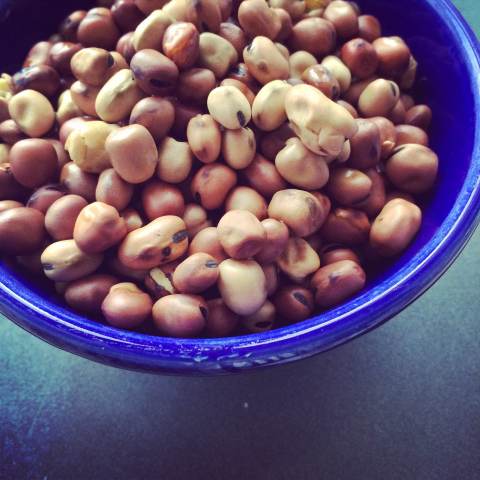
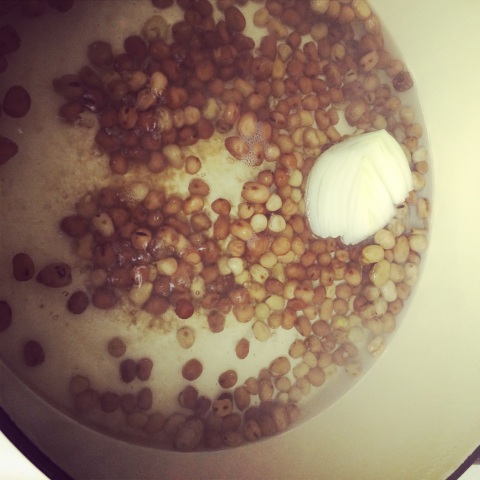
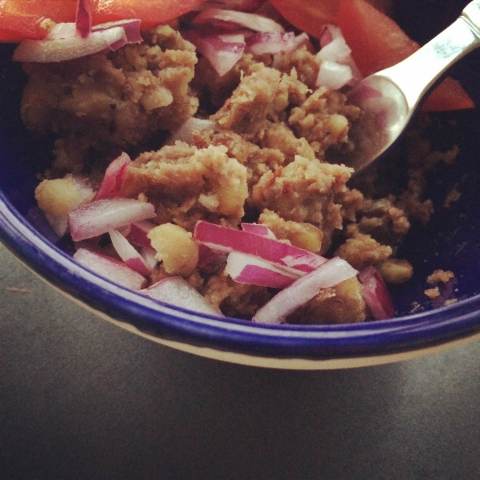
[…] let go a bit in the kitchen. Sometimes, though, I get really frustrated with myself (see the great fava bean disaster of 2014), and avow to be a more organized, mindful […]
LikeLike